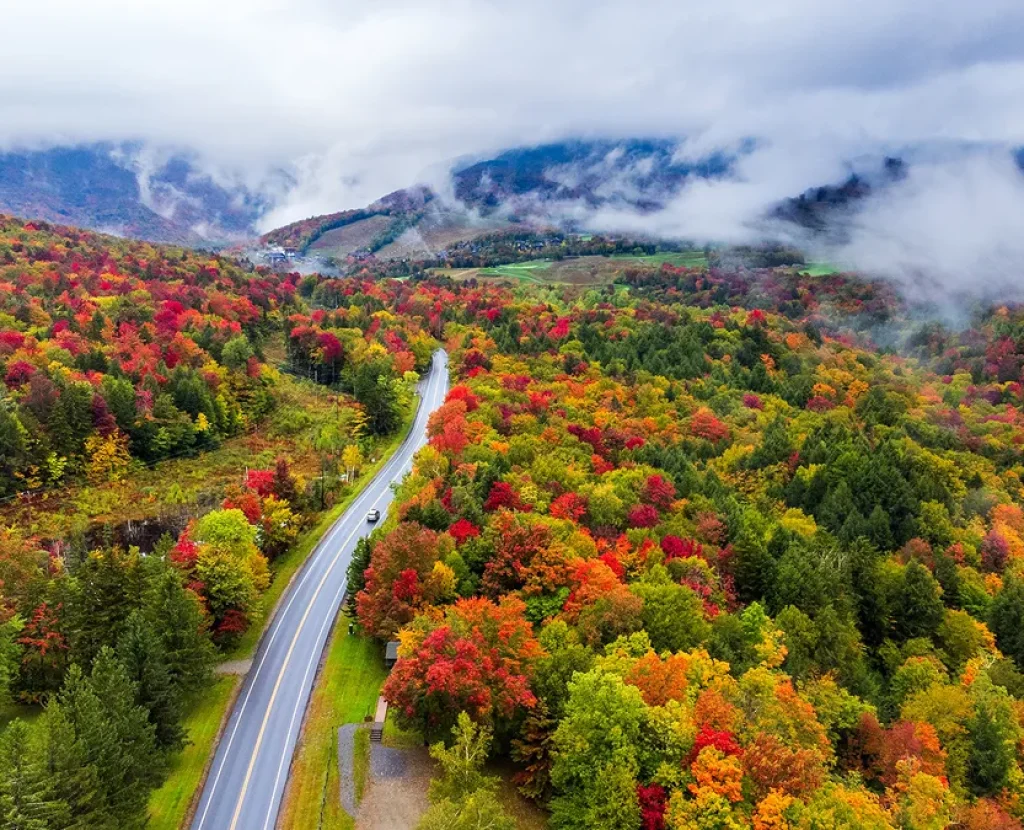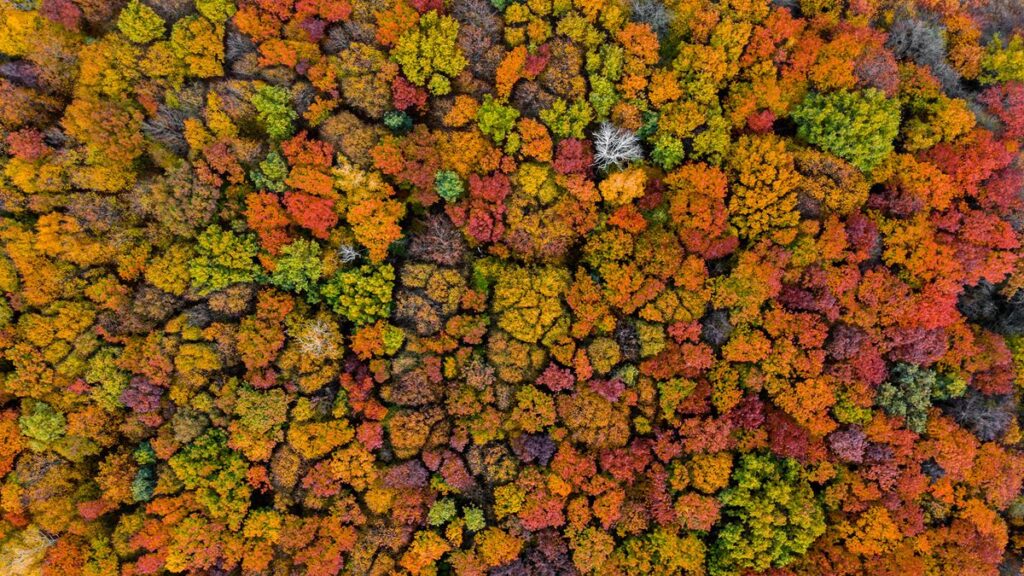
What causes autumn leaves to change their color?
Plants use colors to get energy from the sun. In the fall, you can see some colors more than others

Every fall, people travel to places like Colorado, Vermont, & Massachusetts to see the colorful leaves on trees. Across the country, green forests change into red, yellow, and orange, creating beautiful views.
But why do plants go through this big change, and how do they know when to start?
In forests with a colder climate, trees and shrubs that lose their leaves are called deciduous plants. Examples include aspens, cottonwoods, maples, and oaks. On the other hand, there are plants that keep their leaves all year, like pines, spruces, cedars, and firs, known as evergreens.
Both types of trees make less energy in winter, but evergreens have special features, like a waxy coating, to reduce water loss & keep their needles all year.
Adam Moore, a supervisory forester with the Colorado State Forest Service, explains that trees, like us, sense changes in their environment that signal it’s time to prepare for winter. As early fall arrives, the weather becomes cooler with crisp, but not freezing, nights, and the days become shorter.
These changes mean there’s less sunlight for trees to use chlorophyll in their leaves to make food. In response, deciduous trees, which lose their leaves, start to invest less in keeping them alive.
Moore compares trees to a factory that aims to be efficient. They produce oxygen and energy but, without enough sunlight, they begin to “close up shop” for the season. By the time the first freezes occur, the trees are well on their way to dormancy.
Chlorophyll is the main pigment in plants that helps them use light for energy. Green leaves appear green because chlorophyll absorbs red and blue light but reflects green light.
However, plants also have other pigments, like anthocyanins for red and purple, carotenoids for orange, and xanthophylls for yellow. When chlorophyll decreases in fall, these secondary pigments become visible, creating the vibrant colors of autumn leaves.
Different tree species have evolved their own set of pigments. For instance, red maples turn scarlet, while black maples become yellow. These pigments not only make trees beautiful but also play a crucial role in photosynthesis, the process by which trees make their own food.
Leaves are like “food factories” for trees, and having various pigments helps plants harvest more energy from different light wavelengths. While not all trees invest in multiple pigments, that do are often fast growers.
Although the environment influences the fall colors, genetics also play a role. The timing of color change is partly determined by genes. Some species start changing color as early as late summer, while others, like oaks, may drop their leaves later.
Interestingly, trees of the same species at similar latitudes change colors simultaneously, regardless of elevation. This contradicts expectations that trees at higher, colder elevations would change color first due to cooler temperatures.

As winter arrives, deciduous plants drop their leaves, leaving behind little circular marks known as “leaf scars” where the leaves were attached to tree.
Even without their leaves, trees continue to offer important benefits to the ecosystem. They act as wind barriers and maintain essential habitats for birds. The fallen leaves also play a crucial role by providing nutrients as they decompose into the soil.
“Shedding leaves every year contributes to soil building by creating mulch, covering the soil around the roots during winter to keep them warm,” explained Bezanson.
Never miss any important news. Subscribe to our newsletter.
Related News


British Investor Who Predicted US Slump Warns of Next Crash

I’m a Death Doula: 4 Reasons I Believe Death Isn’t the End


Tech to Reverse Climate Change & Revive Extinct Species

AI Unlocks the Brain’s Intelligence Pathways

XPENG Unveils Iron Robot with 60 Human-like Joints

Can AI Outsmart Humanity?

11 ChatGPT Prompts to Boost Your Personal Brand

Keir Starmer Hints at Possible Tax Hikes on Asset Income

Navigating the Future of AI: Insights from Eric Schmidt
